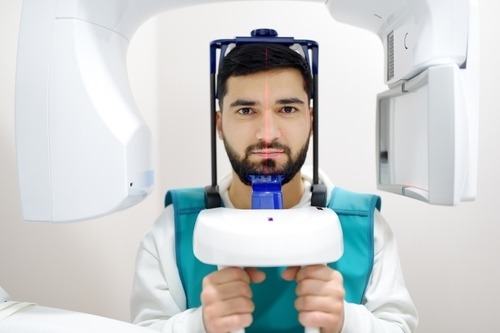
Radiation is a part of our everyday environment, and it comes from various natural and man-made sources. When it comes to medical diagnostics, radiation plays a crucial role, particularly in imaging techniques such as X-rays. One common area of concern for many people is the potential health risks associated with dental X-rays. However, when compared to other sources of radiation that humans are exposed to, modern digital dental X-rays represent a minimal risk. This article will explore and compare the radiation exposure from dental X-rays to other common sources, illustrating why dental X-rays should not be a major concern.
Understanding Radiation Exposure
Radiation exposure is measured in units called millisieverts (mSv). The average person is exposed to about 3.0 mSv of radiation annually from natural sources alone. This background radiation comes from cosmic rays, radon gas and naturally occurring radioactive materials in the earth. Additionally, people are exposed to artificial sources of radiation, such as medical imaging, consumer products and occupational exposure.
Dental X-rays: Minimal Exposure with Modern Technology
Modern digital dental X-rays have significantly reduced the amount of radiation exposure compared to traditional film X-rays. A single digital dental X-ray typically exposes a patient to about 0.005 mSv of radiation. To put this in perspective, this is roughly equivalent to the amount of radiation a person is exposed to during a few hours of natural background radiation. In fact, because radiation exposure is so low with modern dental X-rays the ADA in 2024 no longer recommends lead aprons or thyroid collars during dental X-rays.
Comparison with Other Medical Imaging
When compared to other medical imaging techniques, dental X-rays expose patients to a much lower dose of radiation. For instance:
-Chest X-ray: A standard chest X-ray exposes a patient to about 0.1 mSv, which is 20 times higher than a digital dental X-ray.
-Mammogram: A mammogram typically exposes a patient to about 0.4 mSv.
-CT Scan of the Abdomen and Pelvis: This common diagnostic procedure exposes patients to about 10 mSv, which is 2000 times higher than a dental X-ray.
Everyday Sources of Radiation Exposure
To further illustrate the minimal risk of dental X-rays, it is helpful to compare them to everyday sources of radiation exposure:
-Air Travel: During a cross-country flight, passengers are exposed to about 0.04 mSv of radiation due to increased cosmic rays at higher altitudes. This is eight times the exposure from a dental X-ray.
-Radon Gas: Radon, a naturally occurring radioactive gas found in homes, contributes about 2.0 mSv per year to the average person’s radiation dose, which is 400 times the exposure from a single dental X-ray.
-Bananas: Even certain foods contain trace amounts of radiation. For example, eating one banana exposes a person to about 0.0001 mSv of radiation. While this is a tiny amount, it highlights that radiation exposure is a natural part of life.
Safety Measures and Regulations
The dental industry follows strict safety protocols to minimize radiation exposure to patients. Modern digital X-ray machines are designed to focus the radiation beam precisely on the area of interest, thereby reducing scatter radiation. Additionally, lead aprons and thyroid collars are commonly used to protect patients further.
Regulatory bodies, such as the American Dental Association (ADA) and the International Commission on Radiological Protection (ICRP), provide guidelines and recommendations for the safe use of dental X-rays. These guidelines ensure that the benefits of diagnostic imaging outweigh the risks, and they emphasize the importance of minimizing exposure to the lowest possible levels.
Conclusion
Modern digital dental X-rays expose patients to an extremely low dose of radiation, especially when compared to other medical imaging techniques and everyday sources of radiation. The risk associated with dental X-rays is minimal, particularly when considering the stringent safety measures and regulations in place. Understanding the relative exposure levels can help alleviate concerns and highlight the importance of dental X-rays in maintaining oral health.
Call Today
While it is essential to be mindful of radiation exposure, modern digital dental X-rays should not be a significant concern. They represent a small fraction of the radiation we encounter daily and are a valuable tool in dental diagnostics, contributing to better oral and overall health outcomes. Our dental team, led by our dentist, Dr. Jared French, is pleased to serve patients in and around the Santa Fe, New Mexico, area. Dr. French is committed to assisting you and your family with all your needs. Please call 505-471-5353 to learn more or schedule a consultation.


